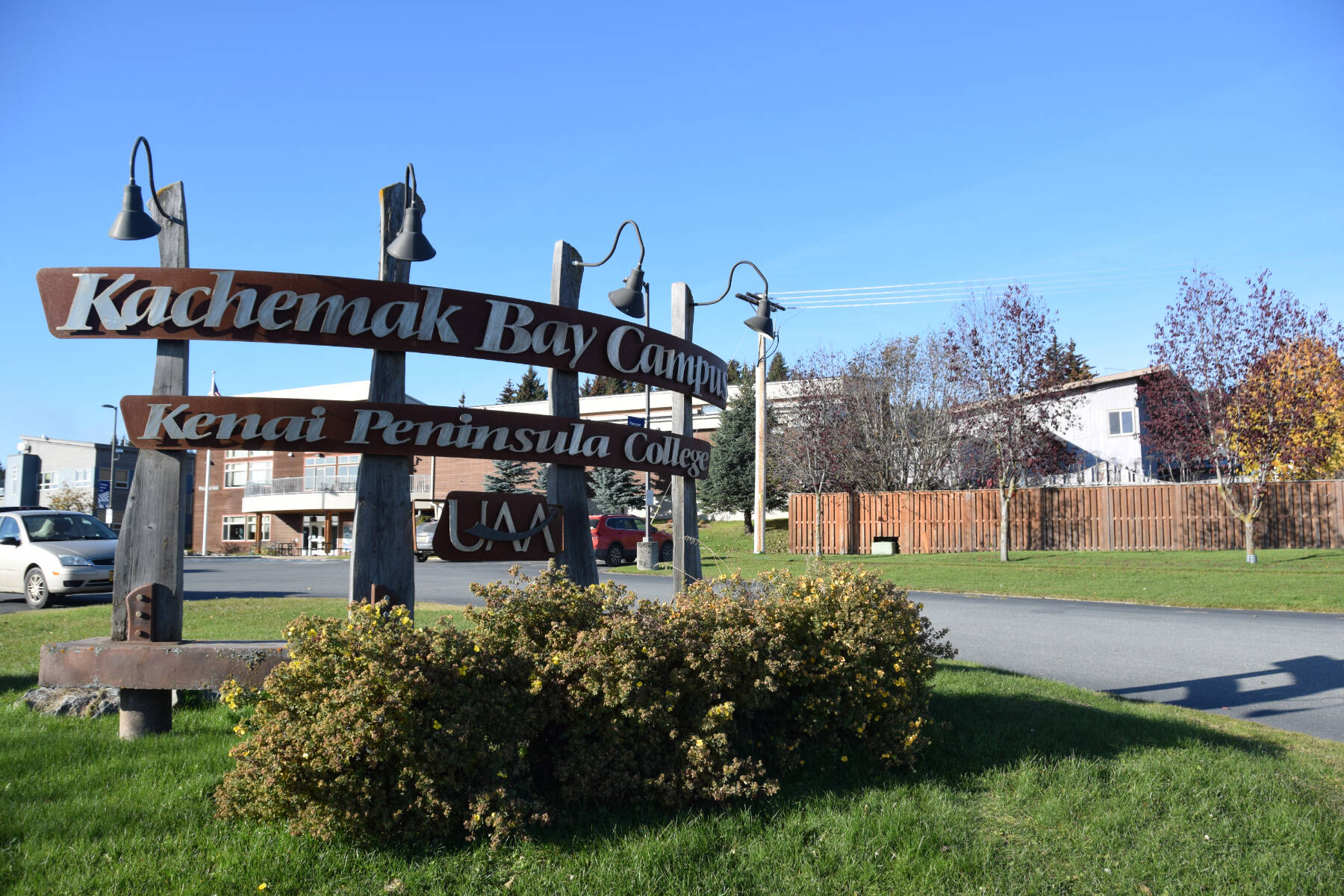A workshop for those seeking resources and information about the Deaf and hard-of-hearing community was hosted last week at Kachemak Bay Campus. Dubbed “Advocacy and Etiquette for the Deaf and Hard of Hearing,” the event offered a training and community conversation with Sharon Miranda, coordinator of Deaf supports for Hope Community Resources.
The event was presented by Hope Community Resources and Rural Deaf Student Support (a component of Hope Resources), with additional support from Deaf Navigator and Homer’s Sprout Family Services.
The training covered a variety of topics from describing the Americans with Disabilities Act; American Sign Language — a visual-gestural language used by Americans; communication strategies; how to establish empathy and report during communication; working with ASL interpreters; assistive technology such as a Sorenson Videophone and Video Relay Service; Video Remote Interpreting; and an Otter.ai app for a smartphone.
It also covered the use of visual language captions for television, YouTube and in performing arts theater.
Miranda provided participants with an array of community resources across Alaska that might be useful to consider as well as technology resources.
Miranda spoke with the Homer News with an ASL interpreter after the workshop about some of the services Hope Community Resources offers.
“One of the things we talked about is that if somebody finds out that they have a deaf person in their family, I am one of the people who can help connect them to deaf services, especially if it is a family that has a deaf infant born into their family,” she said.
Much of the training at the April 4 workshop was related to how to work with interpreters and provided guidelines such as making eye contact with the person speaking rather than the interpreter, speaking in the first person and allowing appropriate time for the interpreter to translate the conversation into ASL.
“The interpreter is here to facilitate communication today, but I am the one speaking to you. You are just hearing my voice through a different person,” Miranda told the Homer News.
Miranda said she tries each year to organize at least four outreach events in communities outside of Anchorage and was in Homer several years ago.
Miranda provided brochures for two organizations she works with in Anchorage. The Hope Community Resources Rural Deaf Student Support brochure explains that the organization provides to deaf and hard-of-hearing students from remote regions of the state housing, transportation and outreach from the age of 3 until their 22 birthday.
If the student’s family is interested, the student will reside in Anchorage during the school year in order to attend the Alaska State School for the Deaf and Hard of Hearing, which is part of the Anchorage School District.
“Housing for AKDS is provided free of charge. The school has a very parent-driven philosophy; the host families must be completely fluent in ASL and are responsible for the student transportation to and from school as well as after-school recreation activities and community involvement with the Anchorage deaf community,” she said.
The RDSS program currently has four students hosted in Anchorage. Three of the students are deaf Native Alaskans from remote villages and another is a non-Native student from the Matanuska-Susitna region, Miranda said.
AKSD has several self-contained classrooms at Russian Jack Elementary School, Clark Middle School and East Anchorage High School. The teachers all teach in ASL. AKSD also provides a service called Adults in Community Transition at a post-secondary school.
“The students at AKSD also have the opportunity to take classes outside of their deaf classroom where they take classes with non-deaf peers with an ASL interpreter,” Miranda said. Placement into the ACT program is determined by the Individual Education Plan team during the student’s enrollment in high school, according to the AKSD website.
The Deaf Navigator brochure, the second of the two brochures, describes the organization as empowering deaf and hard of hearing Alaskans through advocacy, community education and various outreach facilities statewide. Services available through Deaf Navigator include health and social services, employment, housing and education services, free public videophone, caption phones and other computer equipment.
For more information, Miranda suggested looking at the webpage for Hope Alaska at https://www.hopealaska.org/deafsupports.
Twenty-five people from several service organizations in Homer attended the event last week. One deaf local resident attended as well.
“I was really surprised at our attendance for the event. I was actually really surprised. I expected maybe 15, but we blew that out of the water. I think people are really thirsting for knowledge around here and identifying the need in the community, for sure.”
The Thursday event also provided brochures designed for law enforcement and emergency medical services that deaf clients might find useful in the event of interaction with those resources.
For more local information on services available for early childhood youth and families in Homer with a deaf or hard-of-hearing family member, visit the Sprout website at www.sproutalaska.org.



